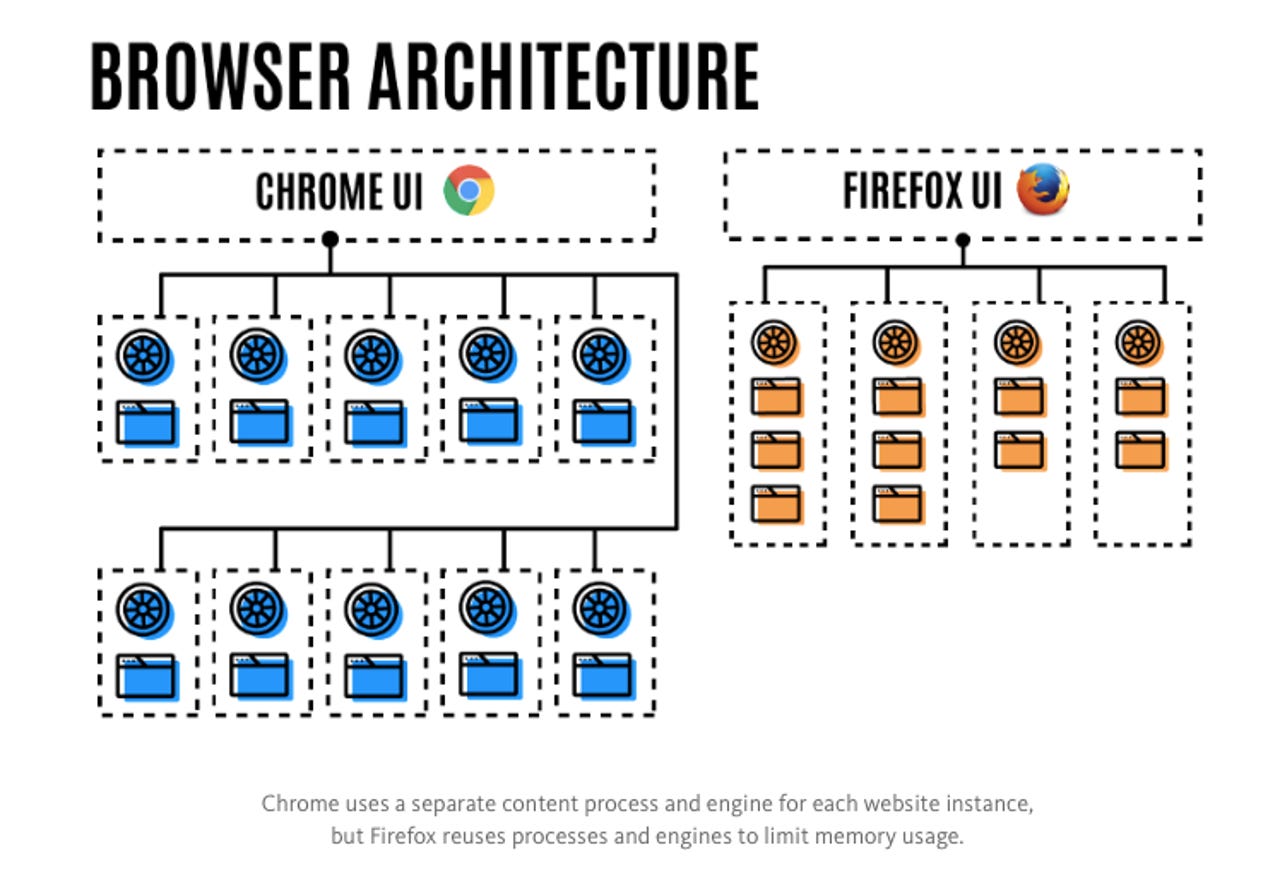Firefox 54 is out: 'Faster but no memory hog like Chrome'. So is it time to try it again?


How Firefox compares with Chrome in the use of memory across multiple tabs.
Mozilla hopes to win back users with the first multi-process build of Firefox, which it says strikes a "just-right" balance between speed and memory.
Firefox 54 is available today and brings with it the fruits of Mozilla's several-year Electrolysis project to re-engineer the browser for modern websites.
The browser is now split into as many as four processes to help run content across tabs, which should result in better performance and lower memory usage.
Four content processes is the "just-right" number for Firefox because it's enough memory to ensure a fast and stable browser, but doesn't hog available memory shared by other desktop apps, according to Mozilla.
Mozilla's tests found that Windows Chrome used 1.77 times the memory of the Firefox 64-bit edition, and more than twice the memory of Firefox 32-bit. Chrome also used 1.36 times the memory of 64-bit Firefox on macOS and 1.42 times more memory than 64-bit Firefox on Ubuntu.
According to the Firefox maker, the results are due to the "liberal" way Chrome uses memory for new tabs compared with Firefox, which creates new processes for up to four tabs, while additional tabs are handled in "threads" within each process that shares the same browser engine.
Chrome by comparison will create 10 processes for 10 tabs with different sites in them, each with its own memory and own instance of Chrome's Blink engine.
Mozilla released the Electrolysis multi-process architecture, codenamed E10S, in Firefox 48 to just one percent of users due to the risk of breaking add-ons.
It has gradually been dialing up its exposure to users, but while Mozilla hoped to have this feature rolled out by the first half of 2017, multi-process Firefox has only been enabled for about half of all users, a spokesperson told VentureBeat.
For those with E10S Firefox, it should help lower memory computers handle busy pages such as Facebook's newsfeed more smoothly.
Mozilla also says it is on track to introduce new browser engine optimizations from its Quantum project by the end of 2017. Quantum will allow the browser engine to make better use of multi-core CPUs and GPUs to improve its performance within content processes.
More on Firefox and browsers
- Windows 10: Chrome vs Firefox vs Edge. Guess which wins Microsoft's battery-life test?
- Google tightens noose on HTTP: Chrome to stick 'Not secure' on pages with search fields
- Firefox drops its Aurora Channel, moving the Developer Edition to the beta version
- Windows 10 Edge, IE: We're now blocking sites signed with SHA-1 certs, says Microsoft
- Chrome 59 is out: Bug fixes, native macOS notifications, Windows 10 Action Center support in the works
- New Windows 10 Fall Creators Update test build adds new Cortana, dictation, Edge features
- Still using Windows XP, Vista? No Firefox 53 for you